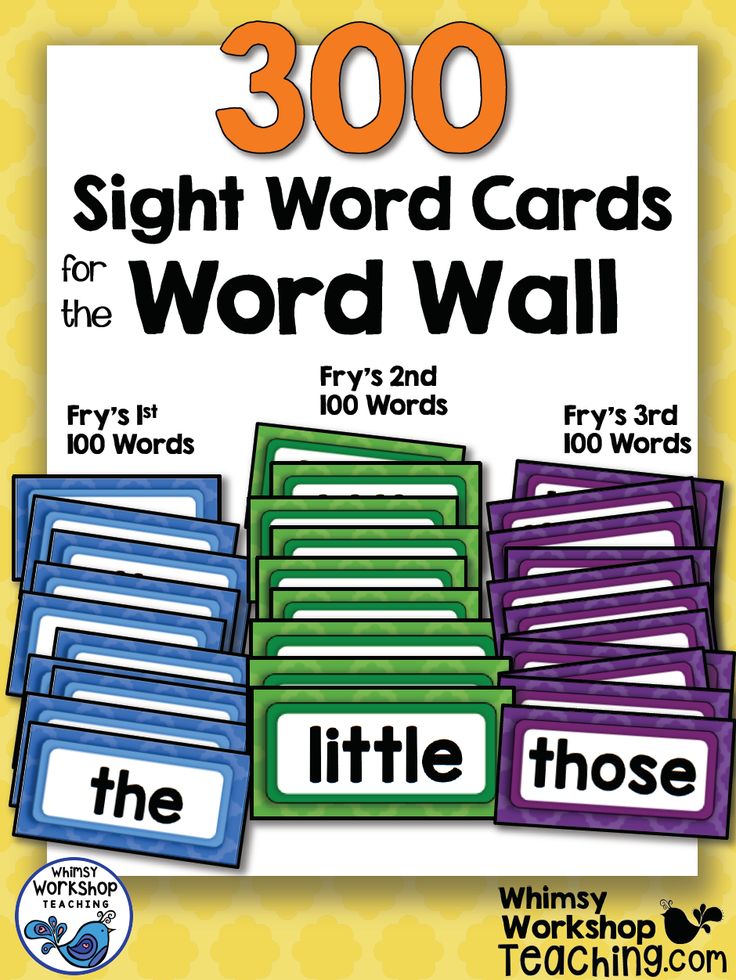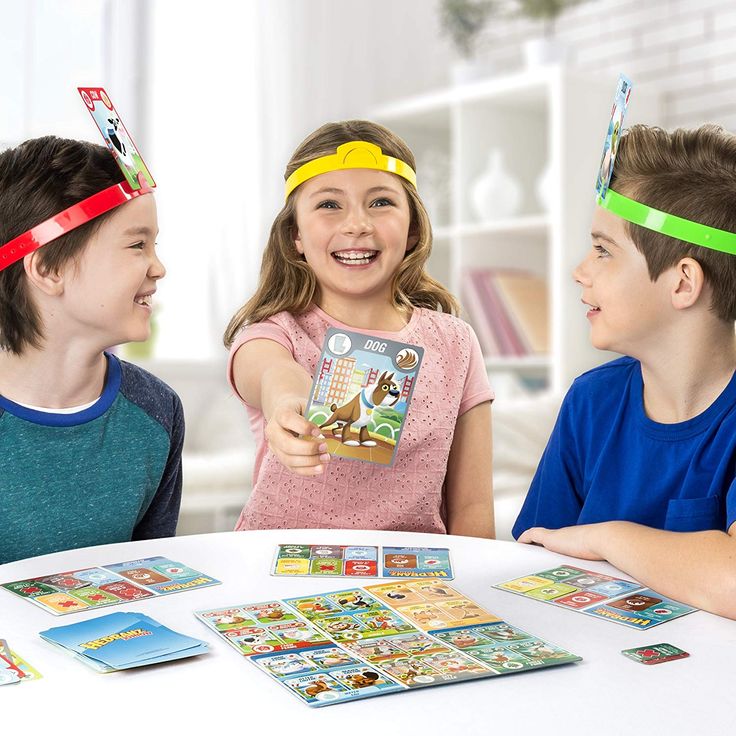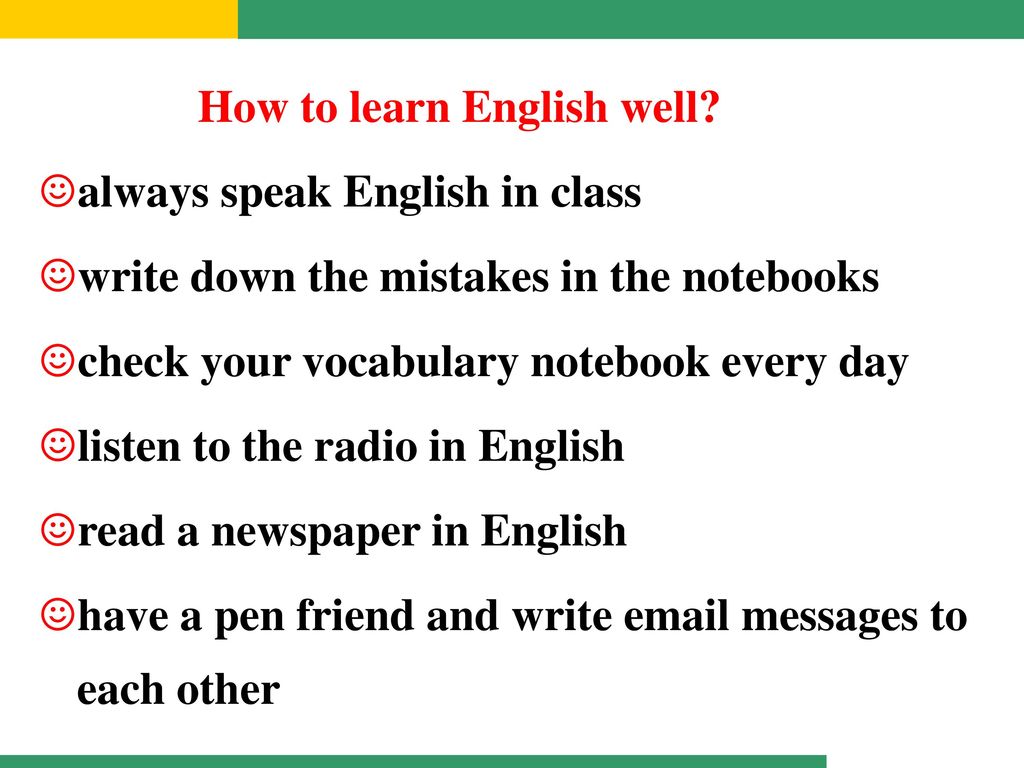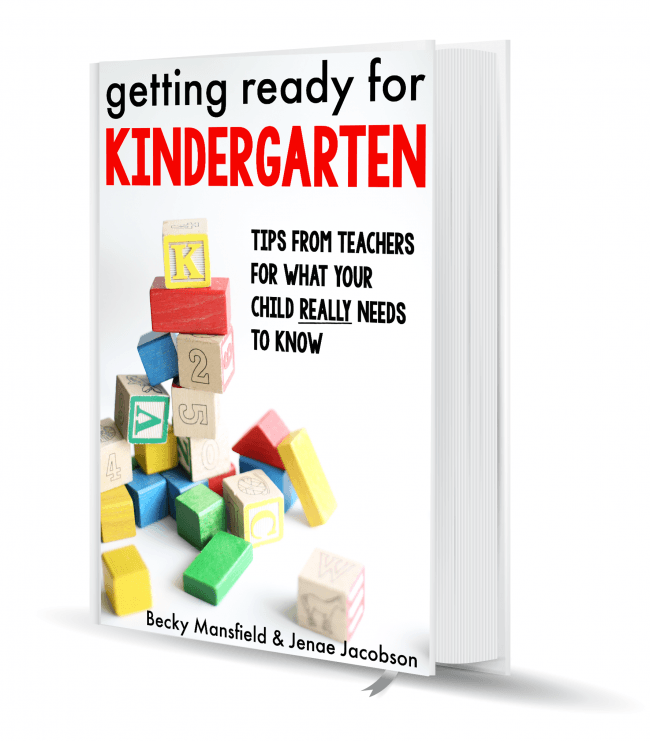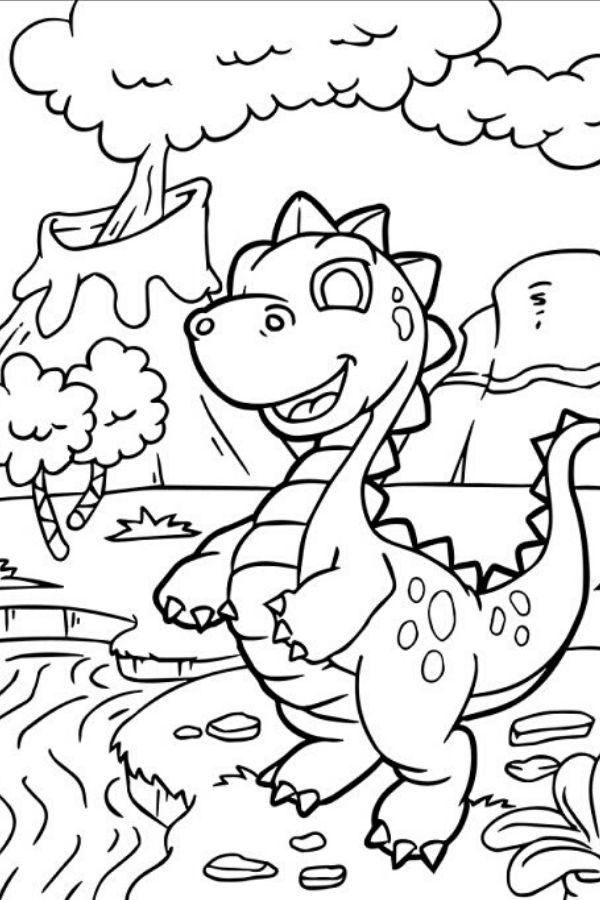Recognize letters preschool
How to Teach Your Preschooler Letter Recognition Through Play
- Share
Helping your preschooler to gain letter recognition skills does not need to feel like “work!”
Learning through play in a fun, stress-free, and positive manner is always the best way.
What Letter Recognition Means
Learning letter recognition skills involves several different hands-on components.
Children need to distinguish the shapes of letters from each other (visually recognize them) and be able to point to and state the letter names, as well as the sounds made by each letter.
In addition, they must learn to form letters and write them .
These skills do not all need to be accomplished during the preschool years and in fact, preschoolers are not yet developmentally ready to learn to read and write.
By simply exposing your child in a fun way, you will begin the process of laying down foundational pre-reading and writing skills.
When Should a Child Recognize Letters of the Alphabet?
Although you can read about average ages when kids gain alphabet skills, those often vary widely.
Just as children learn to walk and talk at different ages, the same is true for recognizing letters of the alphabet.
They each learn at their own pace, depending on many factors.
How to Build Skills to Prepare Your Child for Letter Recognition
Through fun play activities, parents can help their children gain various developmental skills that prepare preschoolers for letter recognition.
Those types of skills include visual perception, memory, and auditory perception.
What this means is that learning the letters does not in fact start with exposure to the actual letters, but rather to play activities that develop these skills.
Visual Perception
Visual perception refers to your child’s brain making sense of what their eyes are seeing, such as details and shapes (shape recognition).
These skills also include visual-motor and eye-hand coordination.
Helpful kinds of activities include:
- those that exercise the large muscles (such as throwing/catching)
- small motor activities (like lacing)
- visual perception (such as building puzzles)
- and limiting screen time, which has limitations related to visual perception skills.
Memory
Memory development relates to storing and using information in the brain.
Stress-free activities to enhance these skills include:
- simple card games
- Memory card games (get your own by downloading the FREE set of printables at the end of the post)
- talking about fun memories
- story visualization
- reading and talking about books
- Visual memory games, like picture bingo
- Auditory memory games
Auditory Perception
Auditory perception includes the brain’s ability to distinguish sounds and words, which is important for learning the sounds of letters.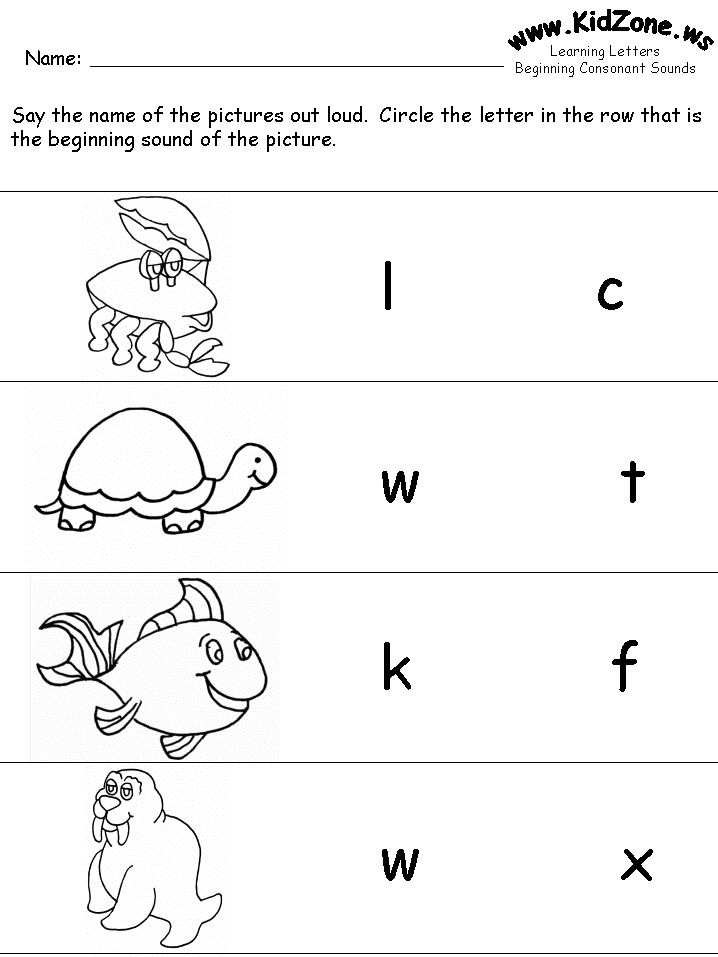
These are the kind of activities that can support this skill:
- listening to music
- distinguishing animal sounds
- clapping out copied rhythm patterns
[source]
How do I Teach My Child Letter Recognition?
Even before your child shows an interest in print,
- reading to them
- sharing poems and nursery rhymes
- talking to them
- telling stories
- and singing songs to or with them
are all meaningful and fun activities that set the stage for letter recognition.
Keep it fresh, keep it new, and be willing to return to their favourite activities when asked.
As your child shows a growing interest in print, make it available to them whenever possible.
Instead of keeping that book to yourself as you read to them, show children the words, running your fingers over them as you read. Let kids turn the pages of books.
Have books available in the home to which kids have constant access.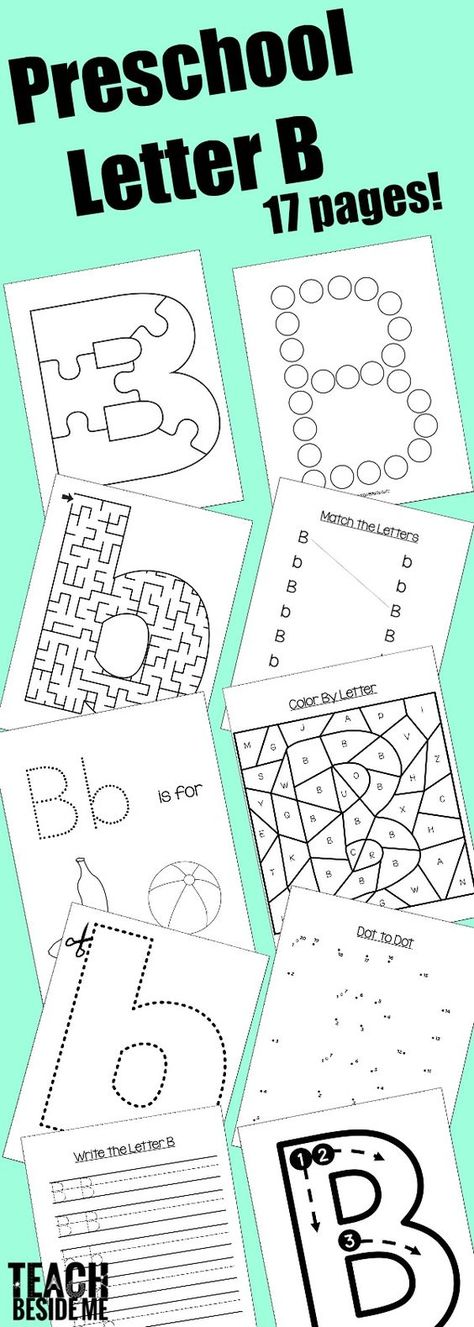
So many things around the house contain words, like packages, lists, letters, emails, screens, magazines, and greeting cards.
Point and touch as you read, showing children that you are using words daily, expressing how much can be learned through their use.
Write in front of your kids for all different purposes, at least sometimes spelling aloud.
Make drawing and writing tools and surfaces available to your child at all times, indoors and out.
Don’t just offer the traditional papers and crayons – include:
- Drawing with sticks in the sand
- Writing on clay or playdough
- Drawing on shower and bath walls with soap
Should I Teach the Letters in a Specific Order?
Instead of teaching letters in any special, prescribed order, focus on those that are used most often and in order of importance for your child.
They typically want to know about the letters:
- in their names
- in “MOM” and “DAD”
- in a pet’s name
- environmental print (like on STOP or WALK signs)
- and even outstanding words from a favourite storybook
Think about and pay attention to those letters and words that appear to be interesting to your kids, using them as the foundation to build upon.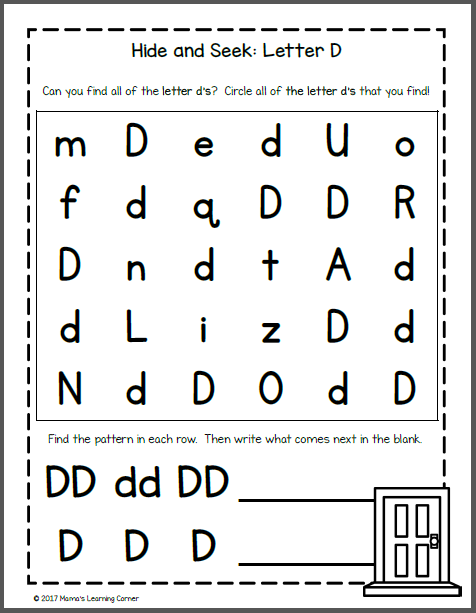
[source]
Is it Better to Teach Upper or Lowercase Letters First?
For preschoolers, the field of occupational therapy makes a good case for beginning with capitals in handwriting letter formation.
They are formed from larger lines and curves that avoid retracing and changing directions, while still teaching top to bottom strokes.
If children try to form letters for which their visual-motor skills are not prepared, they sometimes build poor habits that can be difficult to break later on.
Of course, your child may be familiar with lowercase letters, seeing them in many print formats, and gradually learning to identify them.
When their motor skills are ready, they typically make an easy switch to including them along with uppercase when they write.
[source]
Letter Recognition Activities and Games for Preschoolers
Here are some fun ways to teach your preschooler recognition through play.
1. Point Out Environmental Print
Print is all around us.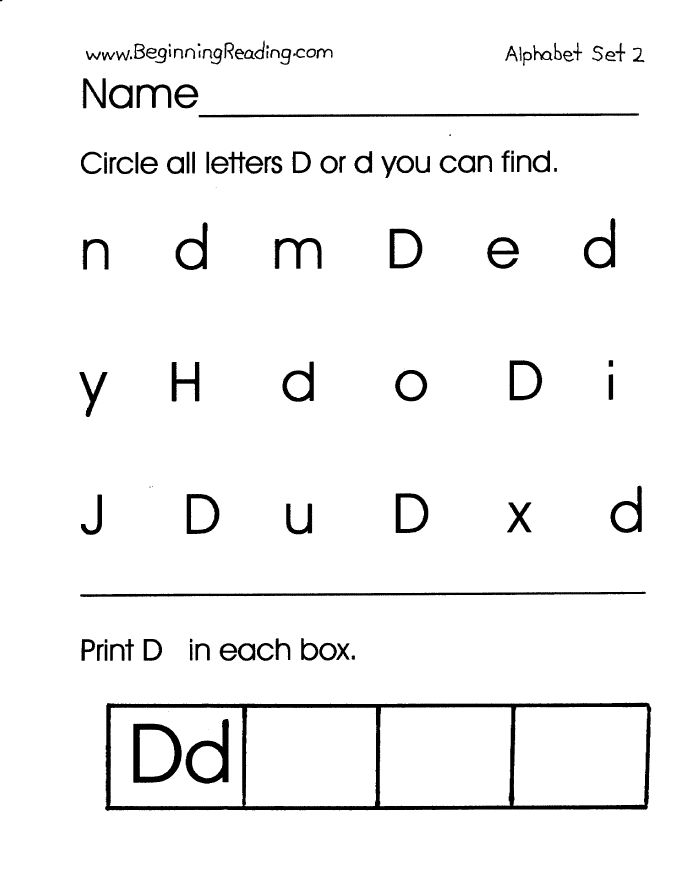
Point out, talk about and stress the sounds of words on signs (such as favourite restaurants and traffic/street signs), cereal or other product boxes/labels, and familiar logos.
2. Share Rhyming Books
Read favourite rhyming books to your child, accentuating the rhyme and rhythm.
Afterwards, play an oral game of stating some rhyming words from the story and adding a new rhyming word of your own.
Challenge your child to come up with more words that rhyme. Either real or pretend “words” are okay, as it is the rhyming factor that counts.
3. Letter Hunt
Point out and talk about the letters in your child’s name, making them clearly visible in print.
Show them how you find one of those same letters in a magazine or newspaper and cut out as a rather square piece (not necessarily trying to cut out close to the letter’s edges).
Challenge them to find other letters from their name in print and cut those out, as well.
After all the letters have been found, they can arrange them in the correct order for their name.
These may be kept in a small bag for future use or glued onto a coloured sheet of paper to post on the fridge or in your child’s room.
Instead of cutting, another option is to use different colours of highlighters to mark various letters found in print.
4. Play with Plastic/Wooden Letters
Letters may be sorted and put into piles in different ways:
- those with curves
- letters with straight lines
- those from your child’s name or other important words
- letters they can name
- and those for which they can say the sounds
Letters with magnets may be used on the fridge or on a magnet board for sorting purposes.
5. Bake Letters
Use bread or pretzel dough to form letters with your child, then bake them to be eaten later.
While you work, talk about the letter names, sounds, and easy words (like their names) that may be formed.
Special baking tins and cookie cutters may be purchased to bake letters. You can also bake oblong cakes and cut into large letter shapes, as well.
You can also bake oblong cakes and cut into large letter shapes, as well.
6. Form Letters with Familiar Materials
Offer kids various types and colours of pasta to form letters on flat backgrounds, either to glue into place or to leave loose and rearrange into different letters.
Other materials to explore might include:
- dry breakfast cereals
- buttons or pennies
- cotton balls
- dried beans
- mini-marshmallows
- toothpicks
- rice
- Yarn
7. Form Letters with Unusual Materials
Using a tabletop or oblong baking pan with low sides, spread shaving cream or pudding for your child to trace letters into with their fingers.
The same may be done with sand (or moved outside), to trace in with fingers or safe “sticks,” like pencils, dowels, or rulers.
8. Go on a Scavenger Hunt
Have children choose a letter card or cutout. Talk about how the letter looks and sounds.
Depending on your child’s level of development, challenge them to find things around the house that have that letter printed on them OR objects that begin with that letter’s sound.
9. Fish for Letters
Magnetic letter fishing games may be purchased or made with paper, magnets, paperclips, dowels, and string.
Name or pick a letter, focusing on how it looks and/or sounds. Kids then “fish” for the matching letters from the “pond.”
They can also just fish for a random letter and then name it once it is “caught.”
You can also use a version of this game later on, when children are learning to match upper and lowercase letters.
10. Play Musical Chairs with Letters
Add paper plates with letters or letters cut from cardboard right onto the chairs or onto the floor beneath.
Children walk around the circle and find a place to sit when the music stops. They each then name the letter on their chair or floor directly beneath.
11. Find Letters on a Keyboard
Make use of an old computer keyboard or typewriter. Your child names the letters as they touch the keys.
They can also find them to press as you say the names, sounds, or hold up cards, one letter at a time.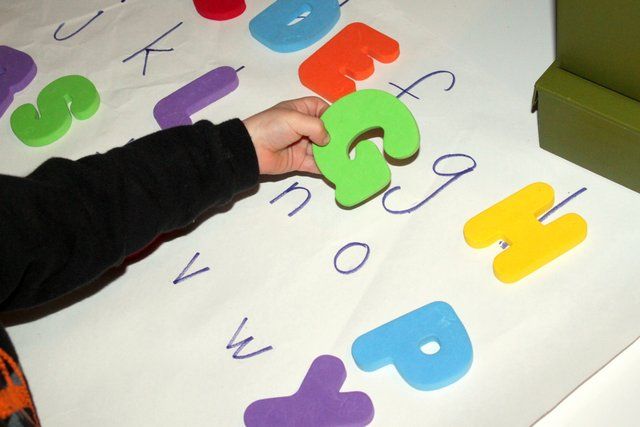
12. Spray or Write Letters Outdoors
Offer spray bottles with water for children to spray letters on driveways, sidewalks, or even the side of your house.
Another option is to use sidewalk chalk to write letters on the driveway, patio, or basketball court.
13. Form Letters with Bendable Materials
Get your child to bend pipe cleaners, chenille stems, or products like Wikki Stix (string covered in wax) to form letters.
Children often like to make multiple letters and form words, as well.
14. Find the Hidden Letters
“Bury” plastic or wooden letters in a sand table or sand box. Ask your child to name the letters as they are discovered.
Other materials may be used as alternates in sand tables or large trays, such as coloured rice, pasta, dried beans, or bird seed.
All of these ideas can help to strengthen your child’s early literacy skills.
Pay attention to where they stand in their development and keep raising the bar just a bit higher, while still returning to those games and activities in which they feel a high measure of success!
This is the key to learning.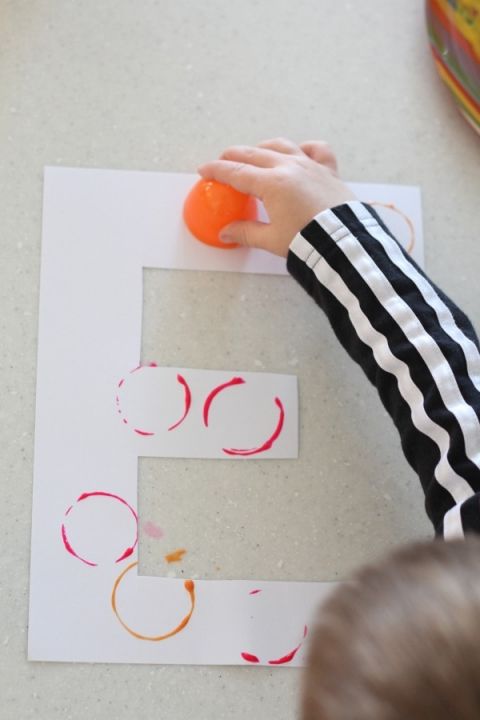
Get FREE access to Printable Puzzles, Stories, Activity Packs and more!
Join Empowered Parents + and you’ll receive a downloadable set of printable puzzles, games and short stories, as well as the Learning Through Play Activity Pack which includes an entire year of activities for 3 to 6-year-olds.
Access is free forever.
Signing up for a free Grow account is fast and easy and will allow you to bookmark articles to read later, on this website as well as many websites worldwide that use Grow.
- Share
10 Letter Recognition Activities - Days With Grey
The curiosity about how to teach letters to your child is such a hot topic! Learning the alphabet unlocks so many new doors, and letter recognition is the foundation of early literacy.
“How do I teach my child the alphabet,” is one of the most commonly asked questions.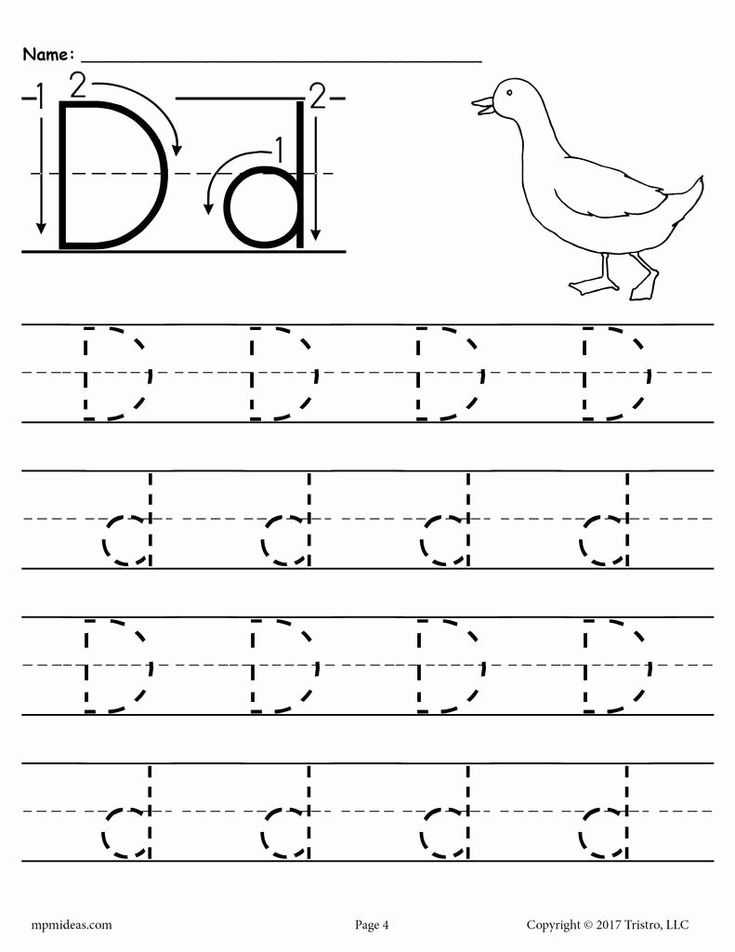 What we have learned in more recent studies is that helping our children hear letter sounds and watch our mouths when we form letters is more important than memorizing. Learn why hands-on learning is important for child development and easy ways you can set up ways to practice.
What we have learned in more recent studies is that helping our children hear letter sounds and watch our mouths when we form letters is more important than memorizing. Learn why hands-on learning is important for child development and easy ways you can set up ways to practice.
Here are 10 letter recognition activities for toddlers and preschoolers. Recognizing a letter can happen in four forms; uppercase print, lowercase print, uppercase cursive, and lowercase cursive. To better understand reading development, read our article, A Parent’s Guide to Phonemic Awareness.
This article will look closely at alphabet recognition and how you can help your child learn the letters. – All through hands-on play, of course!
RELATED: Here are five ways to incorporate reading readiness into your daily routine with toddlers, preschoolers, and big kids.
What Is Letter Recognition?
Letter recognition is the ability to identify letter names, recognize what a letter looks like, recognize how a letter sounds, and how notes come together to make blended sounds.
The alphabet does not need to be taught in a specific order; however, many believe teaching should begin with the most common letters. For example, T, L, and M will be taught before X and Q.
I like to begin with the letters in my child’s name.
A BUNDLE OF OUR BEST RESOURCES
Let’s Create an Environment You and Your Kids are Excited to Wake up to
I WANT TO GET STARTED!
Why is Letter Recognition Important?
By Kindergarten, children learning under the Common Core will be asked to recognize and remember lowercase letters of the alphabet.
Let’s remember that we have plenty of time to build solid foundations of what letters look like, what they are called, and what sound they make.
In preschool, we want to respect this time and introduce letters with lots of room for learning through play and exploration. Exploring the letter names, what a letter looks like, letter sounds, and letter relationships take time to develop!
RELATED: 101 preschool activities to use throughout the year!
Typical Stages of Letter Recognition:
- Letter Names: Understands letters have names.

- Identify 10 Letters: Can identify ten letters, including their name. This is when they also begin to recognize their name in print.
- Case Differences: Begins to identify lowercase and uppercase letters.
- Letter Sounds: Develops a more in-depth understanding that letters stand for sounds.
- Mastery: Masters all letter sounds and can identify letter names.
RELATED: Alphabet toys are a great addition to toys toddlers and preschoolers use daily!
How to Teach Letter Recognition:
- Start with the letters in your child’s name: These letters will have meaning, and your child will be invested in wanting to remember them. Begin with these 15+ Name Activities.
- Show how the letter is formed: Is it a straight line? Curve? Do you recognize a point in your letter?
- Read ABC books: Here is an excellent list of ABC books from Happily Ever Elephants.
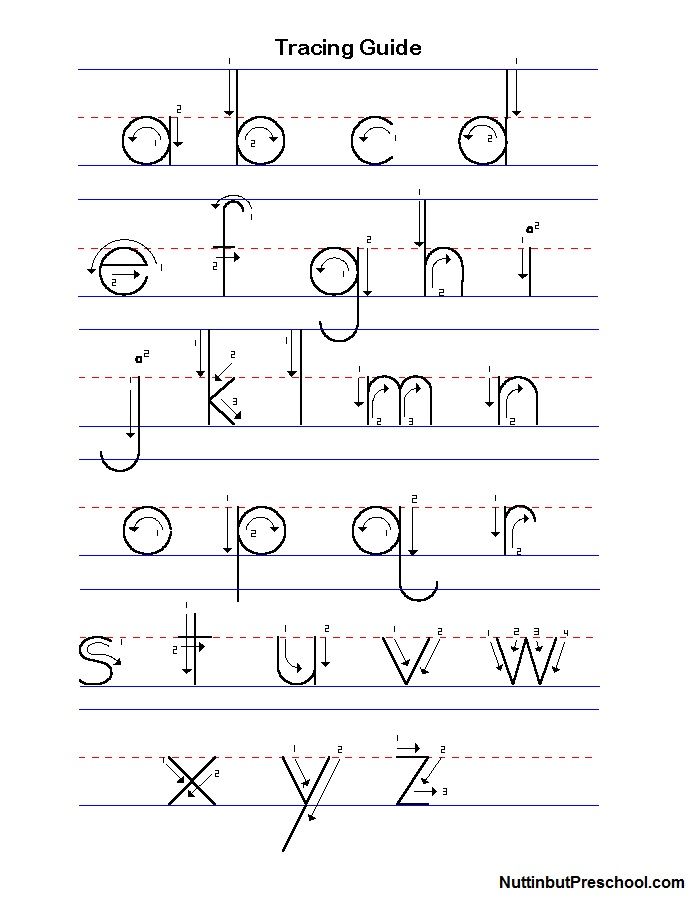
- Use a poster: Write your child’s name on a poster and hang it in their room. Decorate posters with the letters of the alphabet. Hang them at eye level.
- Magnetic letter play: Play with magnetic letters so they can be creative and get comfortable with letter recognition.
- Songs: Sing songs about the alphabet.
- Sound and picture: Match letter sounds with pictures.
- Play games: Letter cards are great for recognition learning (and fun!)
- Make ABC books: Have your child stamp, and you write the words.
- Relate letters to people they know and love: Share and begin to recognize the names of family and friends.
- Sound it out: Talk about how the letter sounds. H, hat, /h/.
- Write it out: After much practice with fine motor skills, begin to write the letters.
10 Activities to Introduce, Improve, and Practice Letter Recognition.
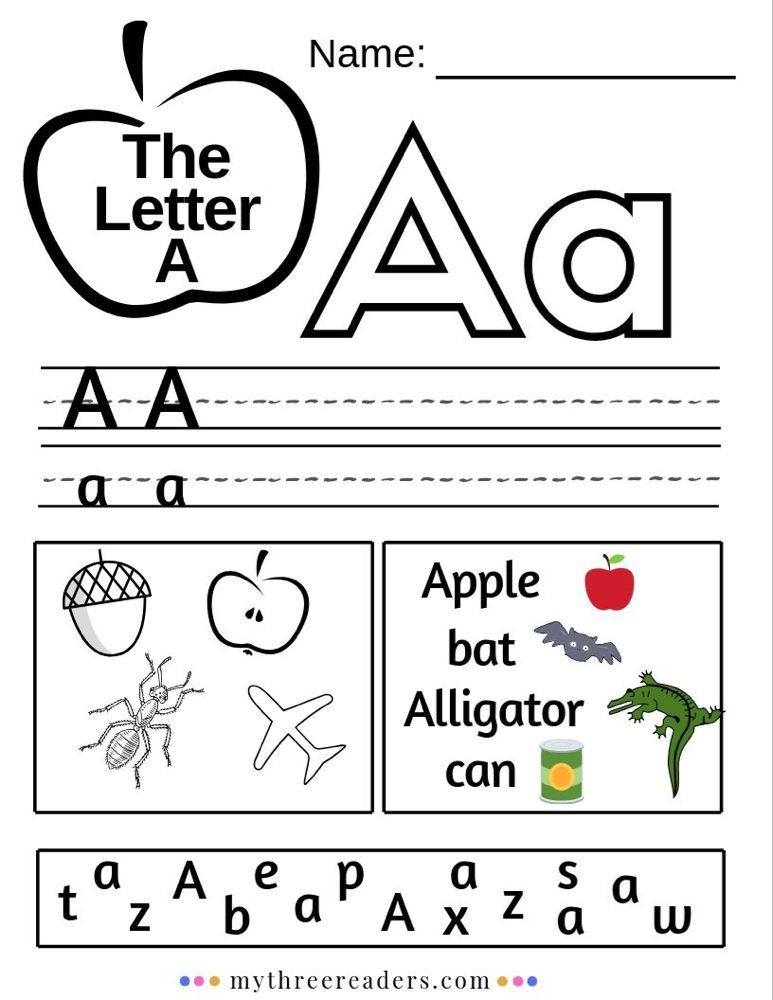
Now more than ever, parents are stressed about doing too much. According to this survey that shares the impacts of the pandemic on young children and their parents, the frequency of parents reading to children and indoor play has dropped.
Parents are more likely to rely on screens because it is a way to decompress after a long work day. (No judgment, it is impossible to do all the things. I feel it too.)
This letter recognition post is intended to share low-prep activities to bring back hands-on learning through play that will feel as easy to set up as relying on digital devices.
RELATED: If you have a toddler just starting, begin with these quick and easy letter recognition activities that use two letters simultaneously.
Rock Letters Alphabet Activity
This easy alphabet idea comes from our activity cards set one. Gather some black rocks from the dollar store and write a few letters on each one with a white permanent marker. Have your toddler or preschooler practice with the first letter of family members’ names. Next, try playing with all the letters in your child’s name.
Next, try playing with all the letters in your child’s name.
Alphabet Sort; Straights and Curves
Did you know that letters have curves, straights, slants, tunnels, and dots? I didn’t either until it was pointed out to me. Seeing and recognizing this is the first step to writing the letters. Let’s pay attention to how a letter looks before putting the pencil in their hand and asking a child to write their name.
Letter Poke and Find
Grab your muffin tin! This alphabet surprise game is a hoot. Put letters in the muffin tin and cover with tissue paper. Your child plays by poking through the tissue paper and recalling the letter name pulled. This is a great risk-free way to ask your child which letters they recognize without the stress of flashcards.
ABC Bean Sensory Bin
Beans are a hit for sensory play. Bury a few plastic lacing letters and invite your child to dig in. Grasping these small letters will help with fine motor development and stimulate the senses for more learning!
RELATED: Does your child enjoy sensory play? Check out these 40 sensory bins for kids.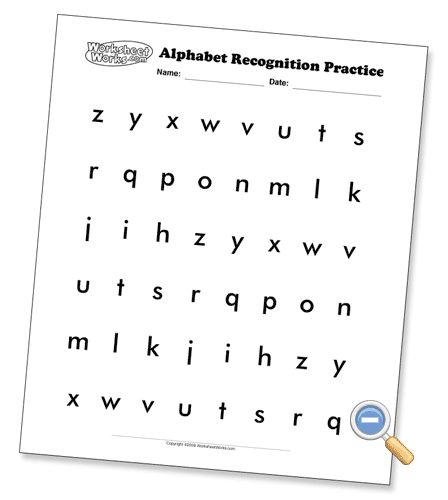
Letter Recognition Drive and Park
Curious about which letters your child knows but also wants to tread lightly? Good call! I also don’t enjoy being interrogated. Your child drives each car to the correct parking spot as you call out letters for this letter recognition activity. If your child is new to learning letters, use less. We can add on more letters as your child develops.
Find your Name
Cheers to a classic name activity. (you can also find it in this 15+ name activities for kids post). Write the names of family members throughout the paper. Next, invite your child to find their name on the giant poster and circle it. This is an excellent way to prep for writing and hold a steady hand as your child circles each name.
Splash the Alphabet
When the weather warms up, head outside to splash the alphabet. For this idea, I like to take a back seat with a large seltzer and show my child a letter card. We talk about the letter name and the letter sound; then, he is off to splash it with colored water.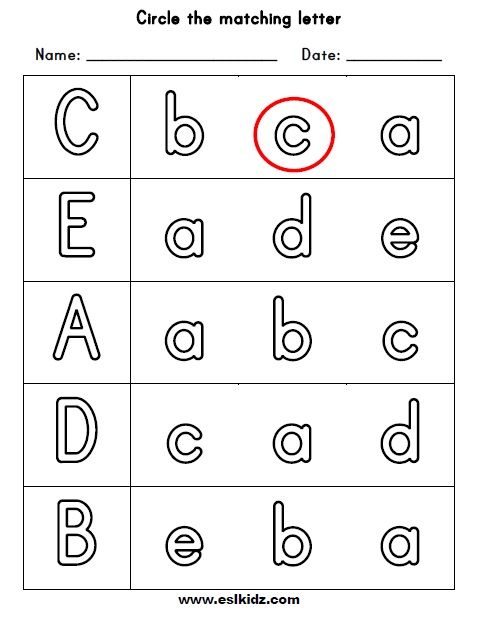 This is a BIG win – especially for reluctant learners.
This is a BIG win – especially for reluctant learners.
Write with Magnets
We made this magnetic board years ago, but never underestimate a cookie sheet! Make a large letter using tape and have your toddler or preschooler follow the lines with transportation magnets or race cars. This letter activity is a fun prewriting activity to practice the lines and curves of letters.
RELATED: Ready to write? Here are the stages of writing development.
Fine Motor Letter Grab
Let’s put those lacing letters to good use with another activity. Here, your child will fish the letters out from the pond and color-sort them when finished. As I sip my hot tea, my preschooler and I chat about the letters he grabbed. Skills practiced are fine motor development, hand-eye coordination, letter recognition, and color sorting. Phew! Can you believe all that in ONE idea? Five stars.
Alphabet Bingo – with a twist!
Remember bingo? Here is how your child can play solo. Grab some letters and place them in a tissue box. Write the letters you picked on the paper. Invite your child to dig in the box and try and get five in a row to win. This makes a fantastic morning activity we like to call Breakfast Invitations.
Grab some letters and place them in a tissue box. Write the letters you picked on the paper. Invite your child to dig in the box and try and get five in a row to win. This makes a fantastic morning activity we like to call Breakfast Invitations.
Kindergarten Word Families
As your child begins to put sounds together, head to this Kindergarten word family post for a list of consonant, vowel, and consonant words. We call these words CVC words or word families. Invite your child to think of words in the -at family by changing the beginning sound. If it is a word, try using it in a sentence. Toss the letter into the nonsense word dish if it makes a nonsense word.
Another great activity for Kindergartners to explore beginning sounds is this picture and sound match-up we played with my five-year-old.
More Letter Activities
- Alphabet Ice Sensory Play
- Giant Alphabet Dot to Dot
- Writing Letters with Race Cars
Frequently Asked Questions
How do you teach the alphabet?
Start with the letters in your child’s name.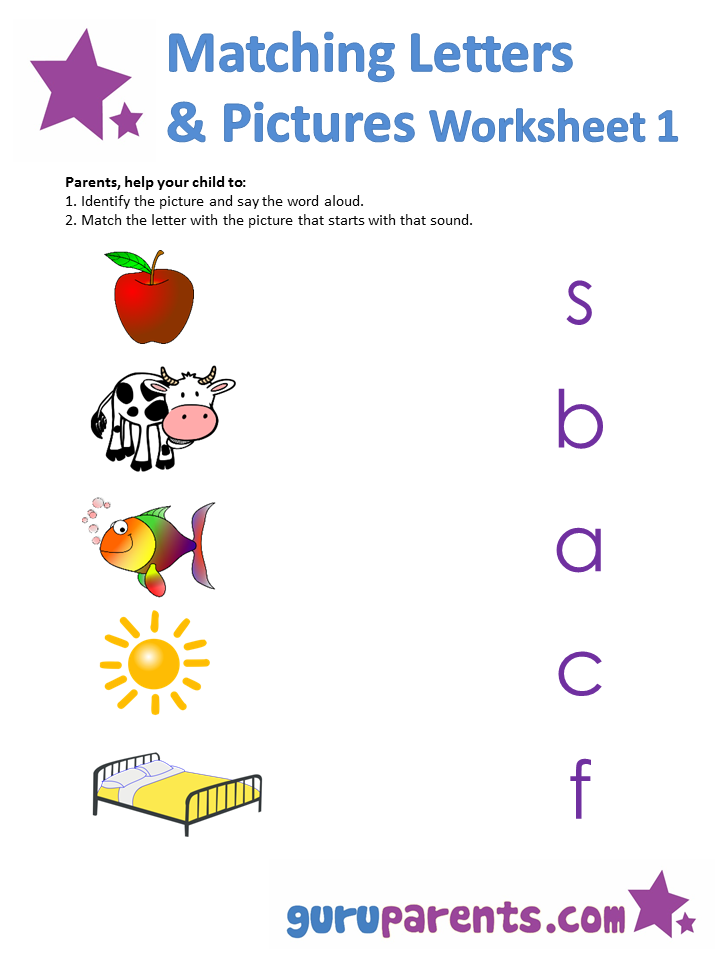 These letters are familiar to children, which makes them more invested. Children who feel connected to learning are more likely to take risks. Use these 15-name activities to get started.
These letters are familiar to children, which makes them more invested. Children who feel connected to learning are more likely to take risks. Use these 15-name activities to get started.
What if a child struggles with memorizing letter names?
We can take a step back when a child struggles to memorize letter names. Begin talking about the letters you notice in your environment and invite your child to play with the letters in their name. Take learning letters slow to honor your child’s pace. Meet your child at the stage they are by identifying a few letters at a time. Add more letters as your child develops.
My child is ready to read. What next?
When children show reading readiness, we want to model what our mouth looks like when saying the letter sound. Begin talking about how our voice box vibrates (or doesn’t) when making the letter sounds. Bringing attention to these details will help your child decode words as reading becomes more complex over the years.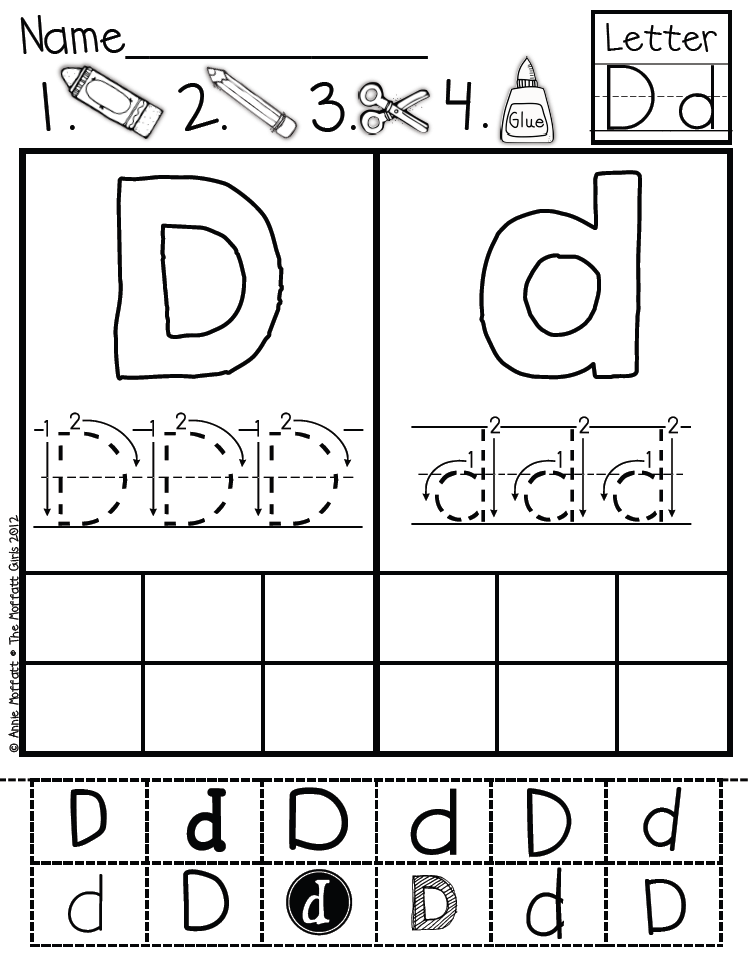
Days with Grey is a participant in the Amazon Services LLC Associates Program, an affiliate advertising program. As an Amazon Associate, I earn from qualifying purchases. Read more about these links in my disclosure policy.
5 Ways to Learn the Alphabet Quickly and Easily with a 3-6 Year Old Child – Somersault
Before learning the alphabet with a child, it is important to understand what you are not going to do. Namely, learning to read. This is a more complex skill, so it is worth putting it off until the time when the child gets acquainted with all the letters and will confidently recognize them and write on their own. Until then, put off the alphabet and reading by syllables.
In this article, we have put together the basic principles to quickly learn the Russian alphabet with a 3-6 year old child in a playful way. For all games with letters, you can use plasticine, paints and any improvised means or magnetic letters - they will easily attract the attention of the child.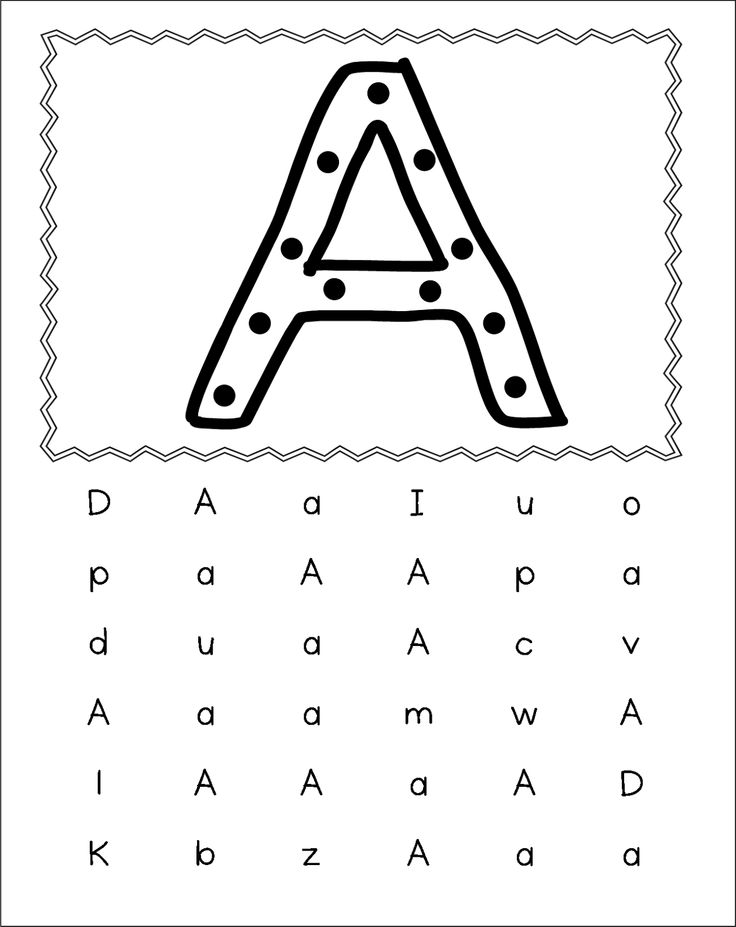
Contents:
- Learn the Alphabet Easily: Basic Principles
- 5 ways to learn the alphabet with your child
- From alphabet to reading
How to Learn the Alphabet Easily: Basic Principles
Each child can find an easy way to learn the alphabet that suits him or her, but there are basic principles that are important for all children. If you do not follow them, study will turn into drill and the child is unlikely to ever love to read. Here are a few such principles on how to properly learn the alphabet for a child.
- Learn sounds first, not letters . At the first stage of learning, it does not matter how the letters in the alphabet are called correctly. Now only sounds are important for the child - "d", and not the letter "De". The names of the letters will only confuse the child, who first needs to learn to recognize the shape of the letters and their sound.
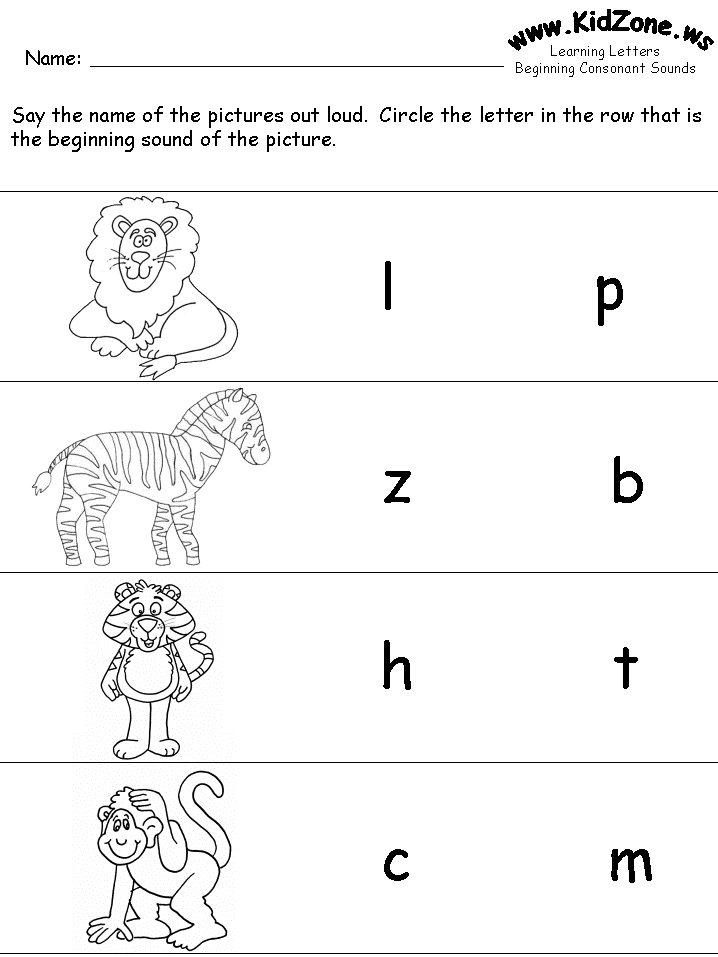
- Not learning the alphabet in the correct sequence . Until a child goes to school, it is of no use to him to know how the letters are arranged in the alphabet. This information will only distract him from what is really important: how the letters look and sound. The sequence of the alphabet can be learned later or even at school, where this knowledge will be tested by the teacher.
- Do not turn learning into a lesson . Learning from call to call is difficult even for children at school, let alone a baby. Therefore, all learning should take place in a playful way and not for long: 5-7 minutes a day to get acquainted with the letters will be enough. Gradually, this time can be increased, especially if the child likes the proposed games with letters.
- Use material objects . At the age of 3-6 years, the child learns the world by touch and taste. It is difficult for him to work with abstract letters spoken aloud.
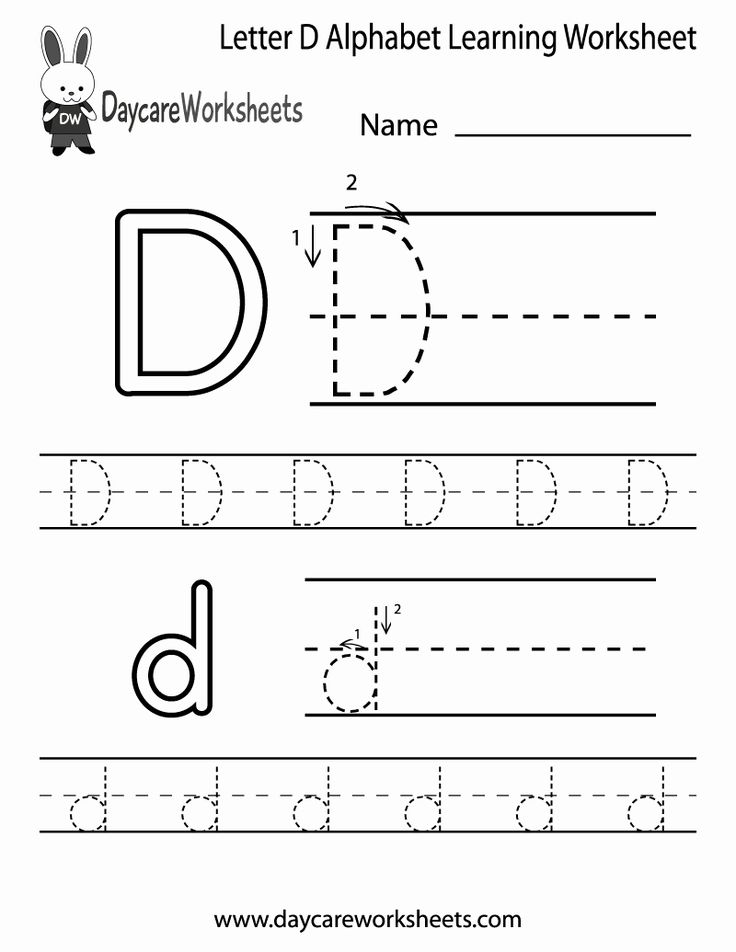 Therefore, it is better to stock up on plasticine and paints and create letters that are more understandable to the child and can be touched. Such a game for children will allow the child to learn the letters of the alphabet and he will recognize them in different forms regardless of what they are made of.
Therefore, it is better to stock up on plasticine and paints and create letters that are more understandable to the child and can be touched. Such a game for children will allow the child to learn the letters of the alphabet and he will recognize them in different forms regardless of what they are made of. - First vowels, then consonants . Vowel sounds are easier to pronounce, so it's worth starting with them.
The main thing is not to force anyone. If you see that the child is inquisitive, enjoys exploring the world and is ready to learn, you can move on to learning letters and the alphabet. So the child will be happy to learn the alphabet in a playful way and gradually learn to read. So that the game is not abstract, you can use the magnetic letters TUMBLING.
5 ways to learn the alphabet with your child
1. Use an interesting topic to study
Use your child's interest to spur his motivation to learn.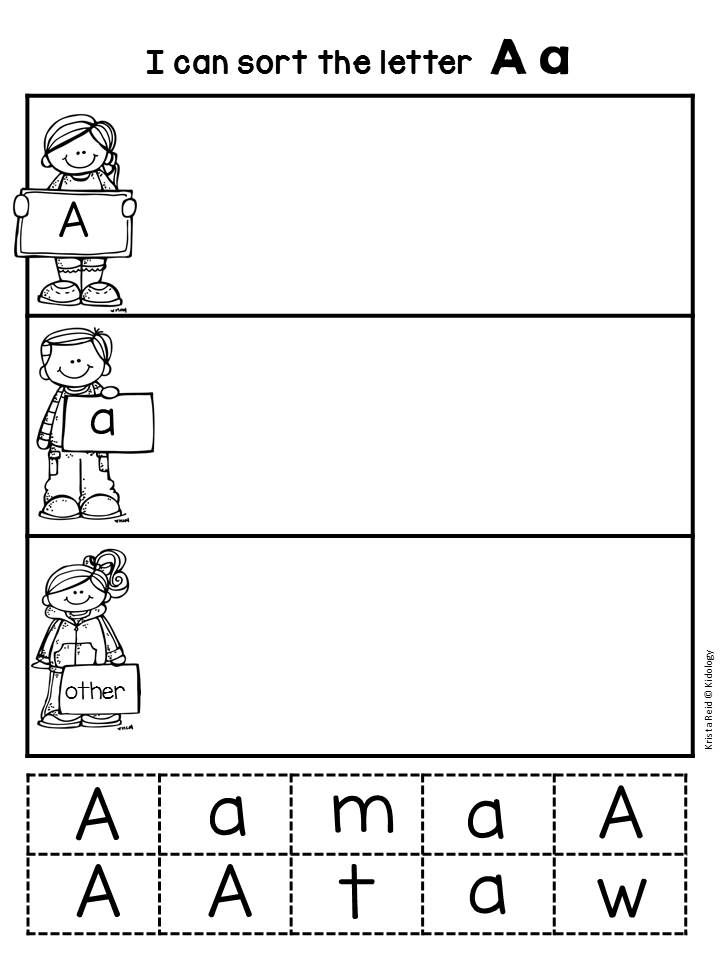 For example, if your kid is crazy about cars, let them be the topic in which you learn the alphabet. Use any words related to cars:
For example, if your kid is crazy about cars, let them be the topic in which you learn the alphabet. Use any words related to cars:
"A" - bus
"B" - trunk
"C" - driver, etc.
You can show cars and their parts, draw or sculpt from plasticine. It is important that the child's focus shifts from learning to doing what they love. Additionally, the method will help expand vocabulary and knowledge about the world.
2. Cross out a letter of the alphabet in the list
Fill in a small square with arbitrary letters. The task is to cross out only the letter that you are studying. This will help the child focus on one letter and not get distracted by the ones he doesn't remember or don't know.
3. Pulling the letters of the alphabet out of the pouch
The soft-touch magnetic letters are perfect for this method. Put the letters in a bag and give the child the task, without looking, to pull out only the letter that you thought of.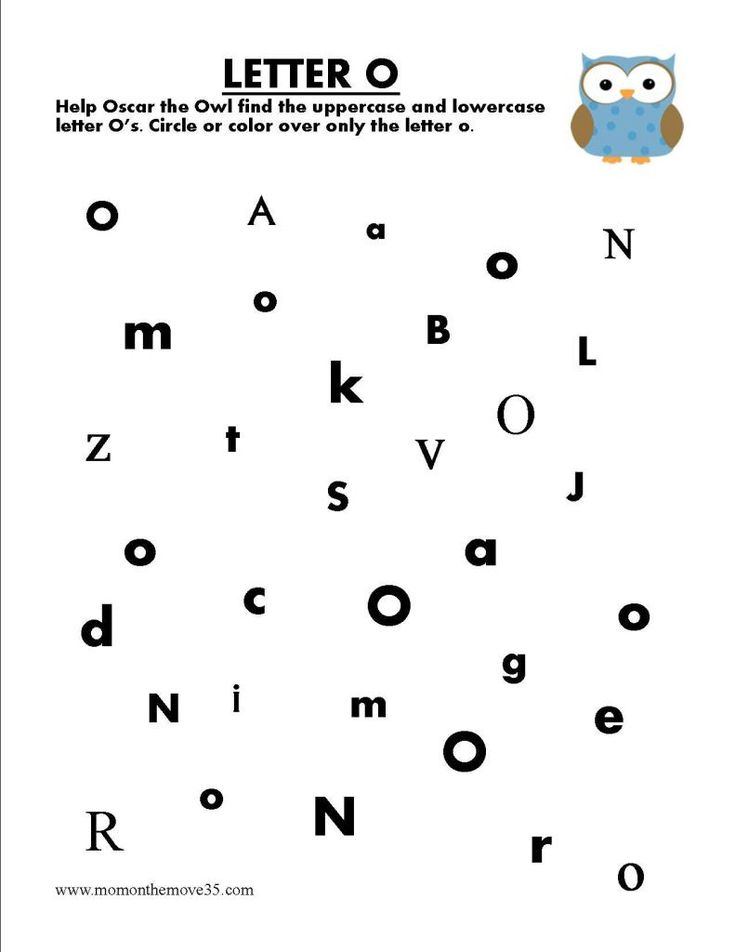 Let there not be too many letters in the bag, otherwise the child will get confused. 6-7 pieces will be enough. To start, use letters that are very different in shape, such as "O" and "M". Gradually, the complexity can be increased and searched among similar letters, for example, "K" and "X". Don't forget to praise and encourage your child. You can alternate the learning process with desktops.
Let there not be too many letters in the bag, otherwise the child will get confused. 6-7 pieces will be enough. To start, use letters that are very different in shape, such as "O" and "M". Gradually, the complexity can be increased and searched among similar letters, for example, "K" and "X". Don't forget to praise and encourage your child. You can alternate the learning process with desktops.
4. Recognize letters of the alphabet by ear
You pronounce a word, and if it contains a hidden letter, the child claps his hands.
With this game for kids, you can learn individual letters or the entire alphabet. For example, you name a word, and the child inserts its first letter into the insert frame. To stimulate your child's interest, you can use only words from his favorite topic, for example, the names of animals.
5. Guess words starting with the first letter
You choose one letter and think of a word that starts with that letter. For example, the letter "Z":
- What is this animal with big ears and loves carrots?
- Hare!
This game form is again suitable for learning individual letters or the entire alphabet.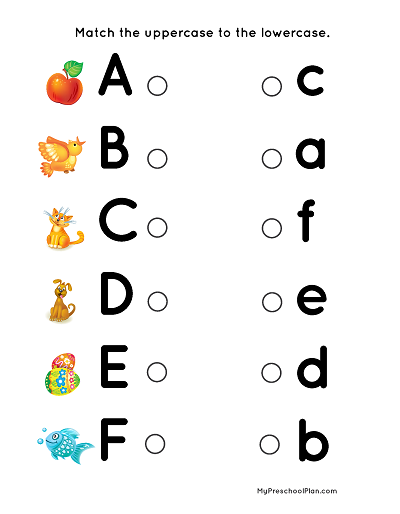 If you learn only one letter, the child gets used to quickly recognizing it in different words. And if you give words with different letters, the child as a whole learns to understand with which letter they begin. With the study of the account and the English language will also help TUMBLING.
If you learn only one letter, the child gets used to quickly recognizing it in different words. And if you give words with different letters, the child as a whole learns to understand with which letter they begin. With the study of the account and the English language will also help TUMBLING.
From the alphabet to reading
When a child learns the Russian alphabet, confidently recognizes all the letters in different words and can draw or mold them on his own, it is worth moving on to reading. Because you need to learn the alphabet just so that the child can read. If knowledge is not used, it will hang as an extra burden, and by the time school will be forgotten. Therefore, you should not learn the alphabet too early: at 3-4 years old, a child is simply not interested in reading books in order to learn something new. He is more interested when his mother reads. Conversely, by the age of six, the child will be glad to have his own books to read them himself.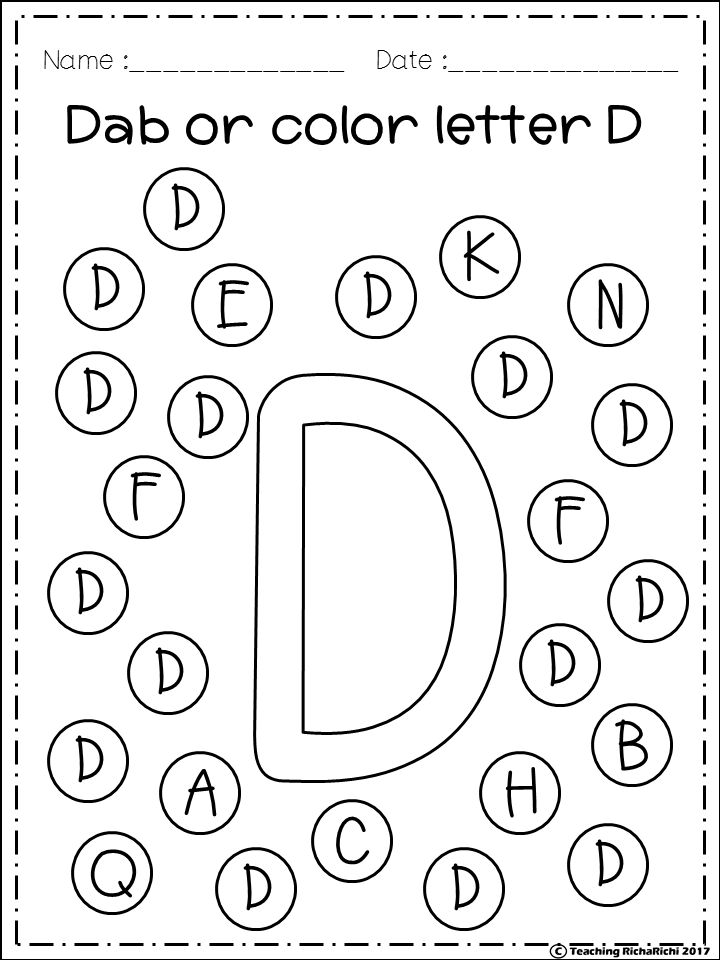
Learning the alphabet: methods, exercises and games for children
The alphabet is the foundation of reading. Therefore, before you start reading and writing, teach your children the letters.
Children can start learning to read as early as preschool age. Parents and teachers need to teach their child how to pronounce sounds correctly in their native language. These are important prerequisites for learning letters and learning to read successfully. The educational process of preschool children is based on visual, acoustic and tactile exercises. The use of various channels of perception in the educational process increases its effectiveness and stimulates long-term memorization of letters.
Learning the alphabet: introducing the child to the alphabet.
To master reading, a child must learn and recognize not only the graphic form of letters, but also be able to compare them with their corresponding sounds. This means that the child must be able to write letters and pronounce them. When the child learns to correctly pronounce all the sounds in his native language and distinguish letters by visual form, go directly to reading. As a rule, at the age of 5-6 years, most children no longer experience difficulties in this.
When the child learns to correctly pronounce all the sounds in his native language and distinguish letters by visual form, go directly to reading. As a rule, at the age of 5-6 years, most children no longer experience difficulties in this.
See also: Reading and bilingualism. Bilingualism in children
From the age of 5 to 6, children begin to understand that there is a lot of information encoded in language using letters. Thus, they are interested in learning to read by then, as they are naturally curious.
Of course, babies can learn and memorize individual letters quite early. However, their interest, mostly spontaneous, is directed to individual words and letters. Here it is important to gently motivate the child by encouraging him to learn through games and a comfortable environment. However, too much pressure can lead to stress, causing little ones to lose any motivation to learn letters.
Alphabet learning games
The first rule of learning the alphabet: learn the letters one by one!
Don't forget, each letter is made up of visually similar elements.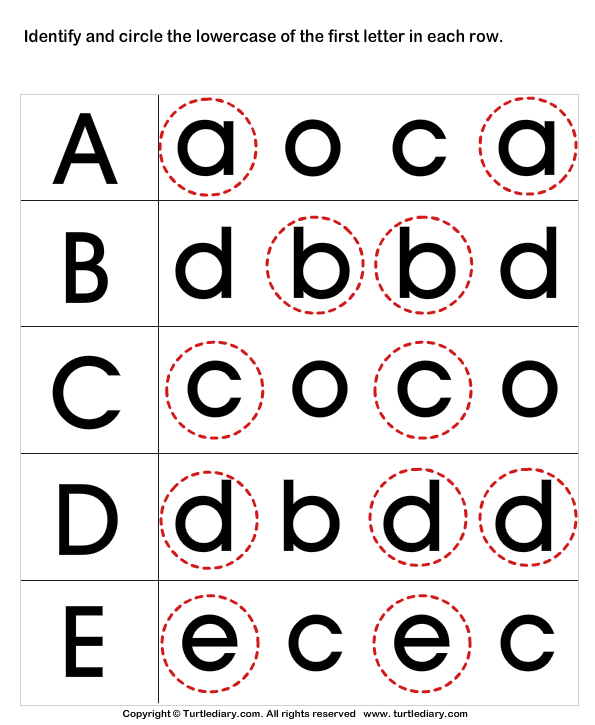 If you try to teach a child several letters at a time, he may become confused. Learn the letters one by one. One lesson - one letter.
If you try to teach a child several letters at a time, he may become confused. Learn the letters one by one. One lesson - one letter.
Second rule of learning the alphabet: take your time!
Give your child enough time for each letter. Plan 1-2 lessons for each new letter. Organize the lesson in a form that is interesting for the child with the help of games.
The tactile method: from studying letters to reading
The child sees something abstract in a letter. Chains of associations will help in learning letters. Associating each letter with something specific or familiar helps the child fix it in his memory.
1. Make a letter out of plasticine
Memorize what a letter looks like and develop fine motor skills.
We will need: plasticine (should be elastic), modeling board and a disposable plastic knife.
Together with your child, roll out 8 approximately identical sausages from plasticine.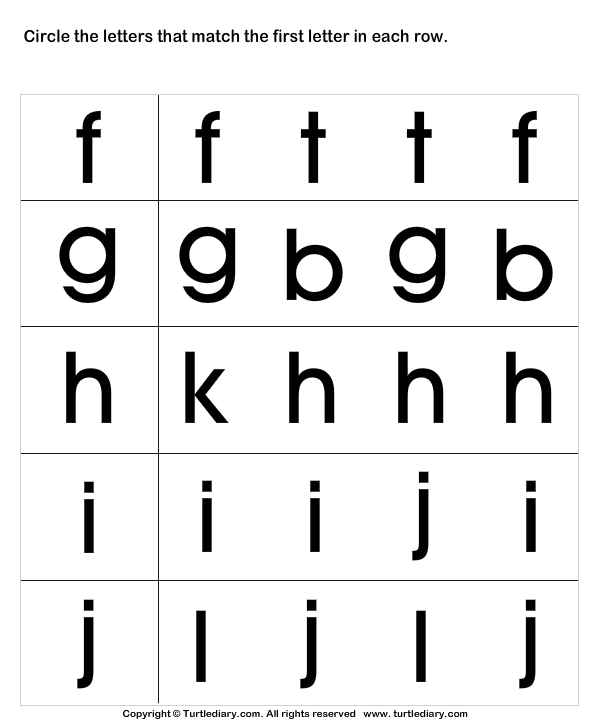 2 - divide in half, 2 - divide into 3 parts. From the remaining 4, make rings by blinding their edges and cut 2 of them in half, creating semicircles. Thus, you should get a set of elements to compose any letters of the alphabet. Show the child a couple of examples and ask them to repeat, collecting previously passed letters.
2 - divide in half, 2 - divide into 3 parts. From the remaining 4, make rings by blinding their edges and cut 2 of them in half, creating semicircles. Thus, you should get a set of elements to compose any letters of the alphabet. Show the child a couple of examples and ask them to repeat, collecting previously passed letters.
2. Magic wands
Let's memorize letters, learn how to make letters from sticks, learn how to transform letters.
We need: a set of counting sticks. If not, you can replace with matches or toothpicks.
The easiest way is to lay out letters from sticks according to a pattern or without a pattern (according to the idea). When the child learns to lay out all the letters, you can complicate the task by laying out objects familiar to the child from them, and then ask them to change them, for example, make a figure resembling a door out of sticks, and then ask the child to remove 2 sticks to make the letter P.
3.
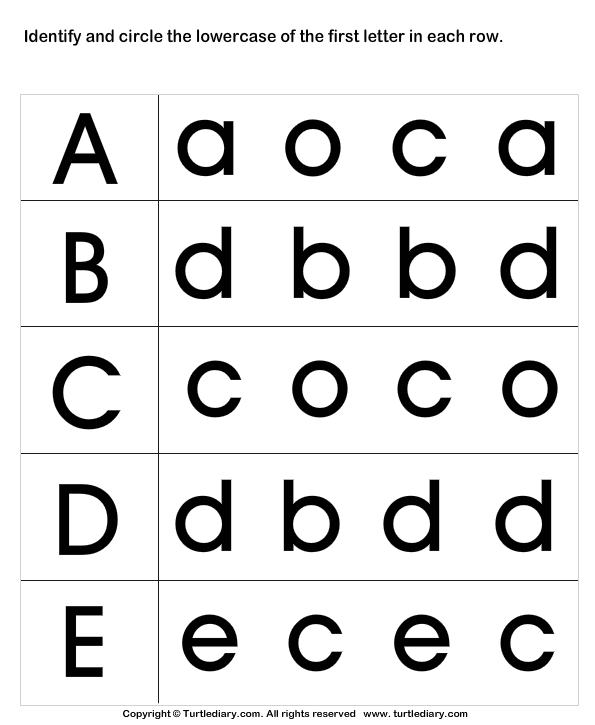 Tactile letters
Tactile letters Memorize letters and develop fine motor skills
We will need: sandpaper, velvet paper, scissors.
Cut out letters from sandpaper or velvet paper. The child will have to close his eyes to identify the letter by touch.
4. Draw a letter on the semolina
Memorize letters, develop fine motor skills
We will need: a bright dish tray, semolina
Pour sand or semolina in a thin layer on the tray. Set an example for your child, show how to write letters on the croup with a finger or a stick. Ask him to write next to the letter, the same as you wrote, to write a letter more or less than yours, to add an unfinished letter, or to erase the extra detail of the "wrong" letter. Children will like this game, just shake the tray a little, and the mistake or inaccuracy made disappears!
5. Mirror letter
Memorize letters and train attention
We will need: cardboard, pencil and scissors
Prepare identical cards cards, 2 pieces for each letter. Write 1 letter on each card. Write the letters in mirror image and correctly. Lay out cards with the same letter in front of the child and offer to choose the correct one.
Write 1 letter on each card. Write the letters in mirror image and correctly. Lay out cards with the same letter in front of the child and offer to choose the correct one.
6. Memory test game
Memory training
We will need: scissors, cardboard and a pencil
The game "Memory Test" will challenge even older children. Write each capital letter on one card and lowercase letter on the other card. Turn over all the cards and place them on the table. Ask your child to match uppercase and lowercase letters. You can complicate and add a dictionary element. Have the children match the letter of the alphabet with the picture that starts with that letter.
7. Bean bag
Memory training
We will need: a bag of beans or other bulk material, a tablecloth or a large sheet of paper.
If you want to warm up a bit while you study the letters, play a game of Beanbag. Write the alphabet randomly on a large piece of paper.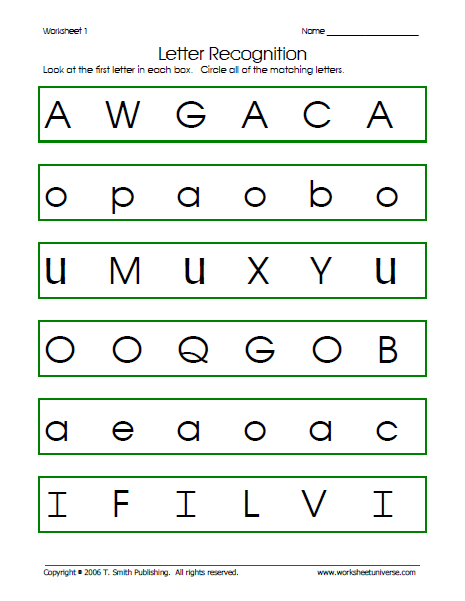 Give the children a bean bag and ask them to put it on paper. The child must name a word that begins with the letter on which the bag fell. If a student is stuck, help him.
Give the children a bean bag and ask them to put it on paper. The child must name a word that begins with the letter on which the bag fell. If a student is stuck, help him.
Ask the child to check the chosen letter with letters from the alphabet. Be sure to ask the name of the letter. The exercise will help children learn to distinguish visually similar letters and avoid mistakes when writing them in the future.
Drawing, coloring, cutting letters out of paper and gluing them together develop fine motor skills in children. Self-made flash cards with letters facilitate memory and associative thinking, creating the basis for tactile games. You can make postcards alone or with your child. Letters can be cut out of paper of various textures and pasted onto cards made of cardboard or paper. Then you can ask the child to pick up letters from 2-3 cards with their eyes closed.
Literacy begins with learning the letters of the alphabet. Combine different perceptual styles.





